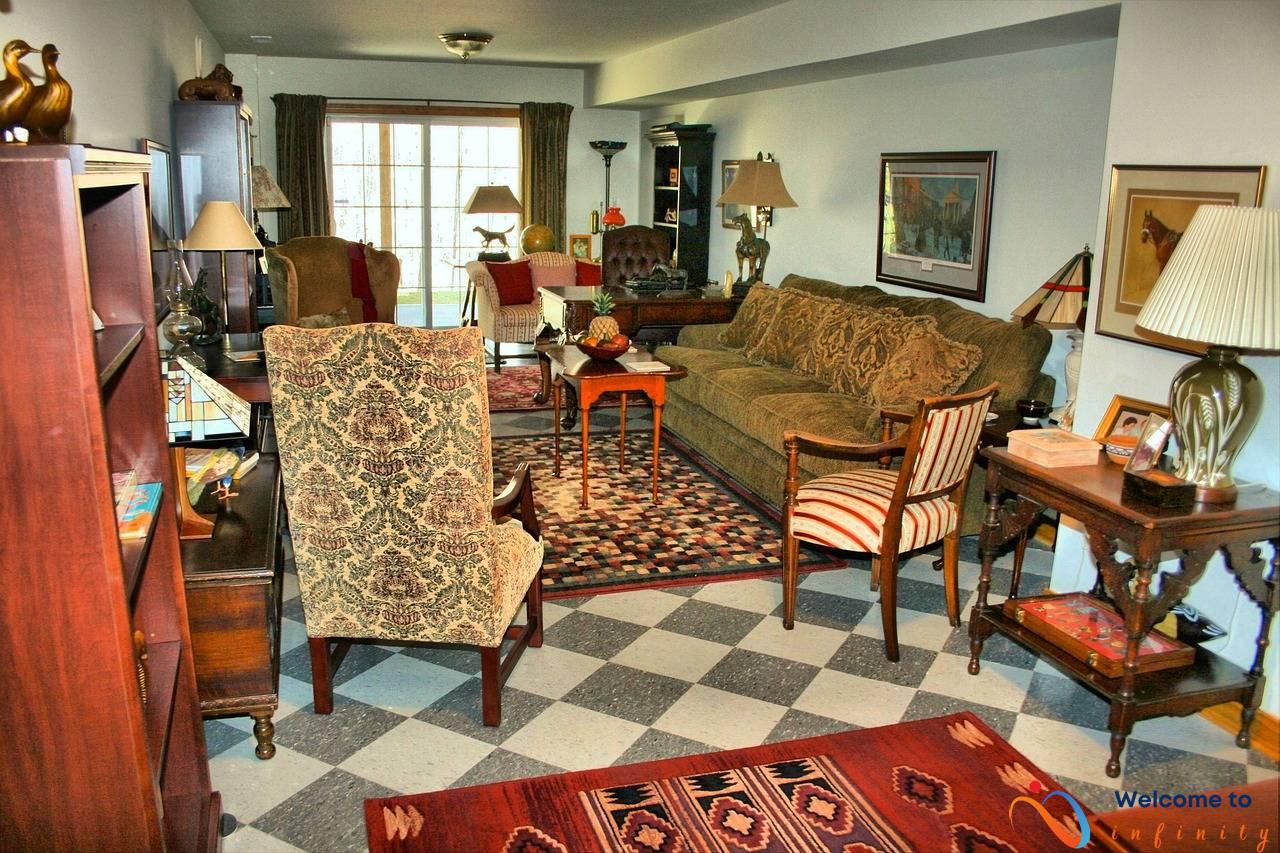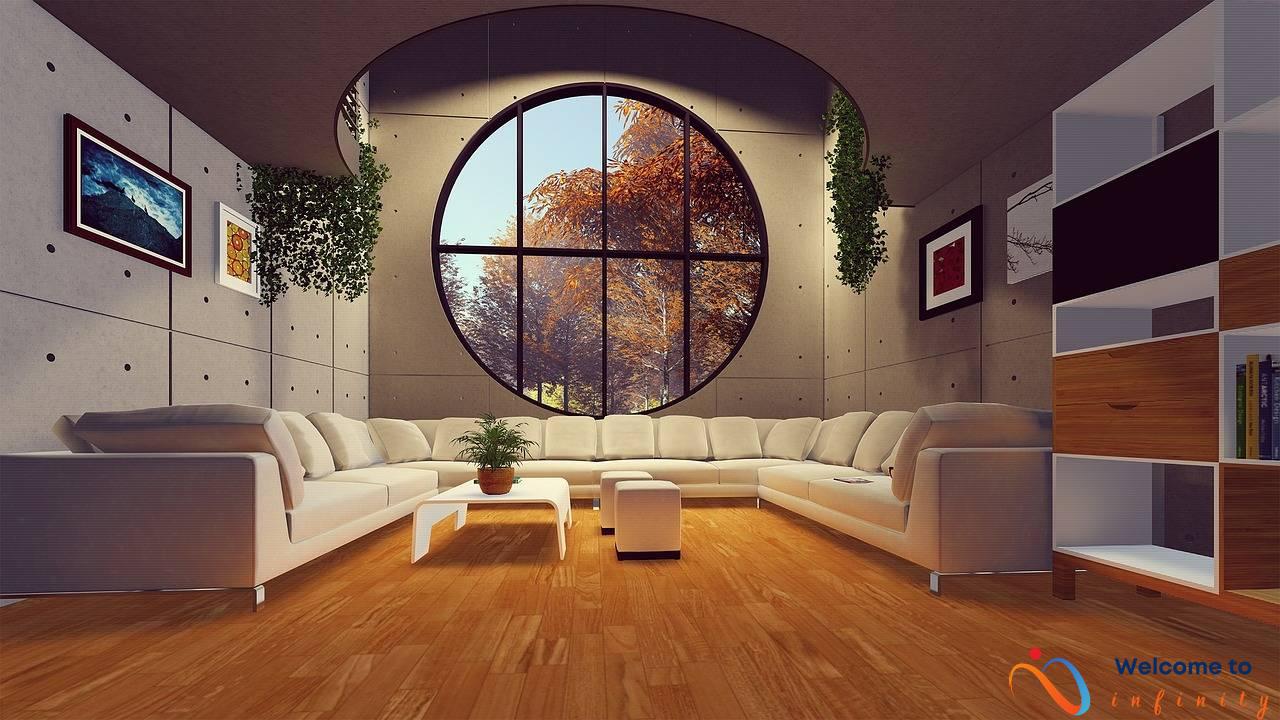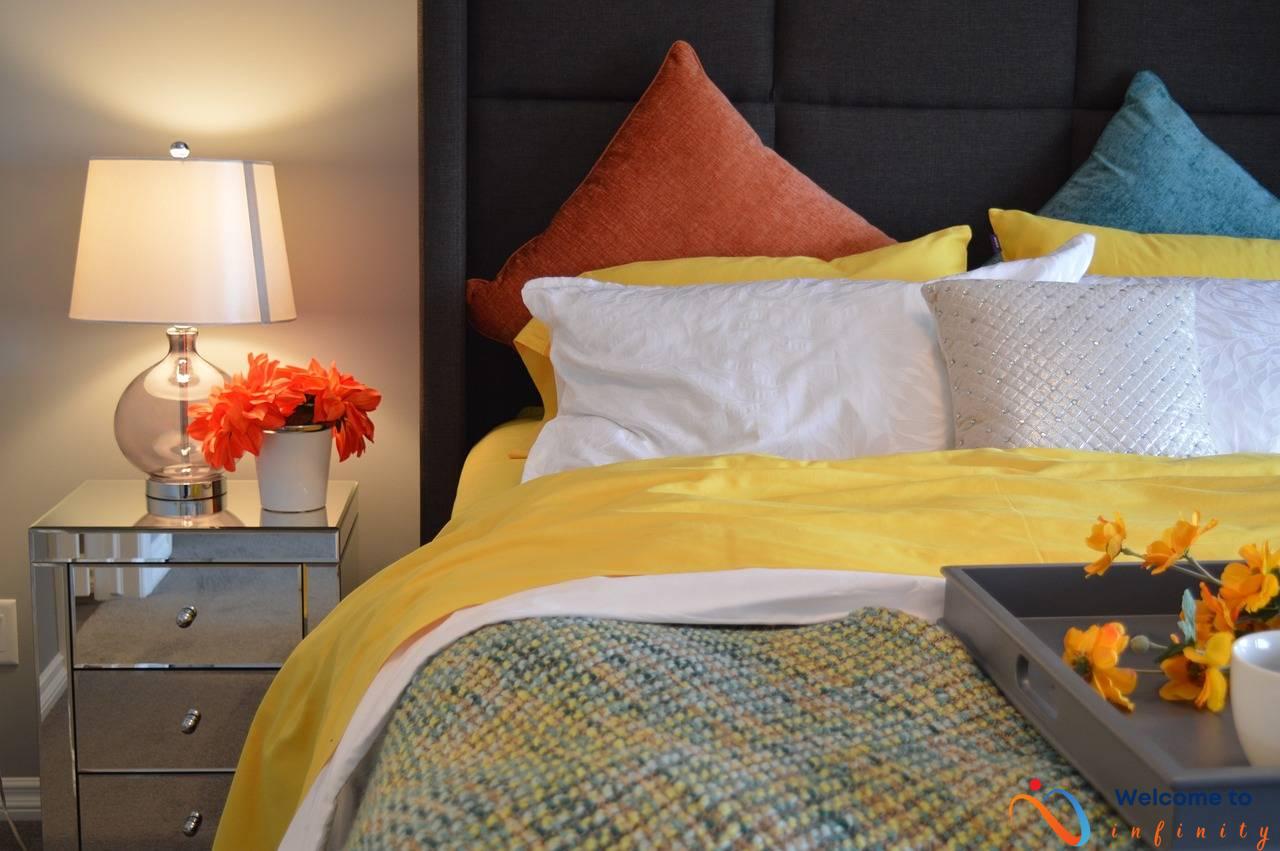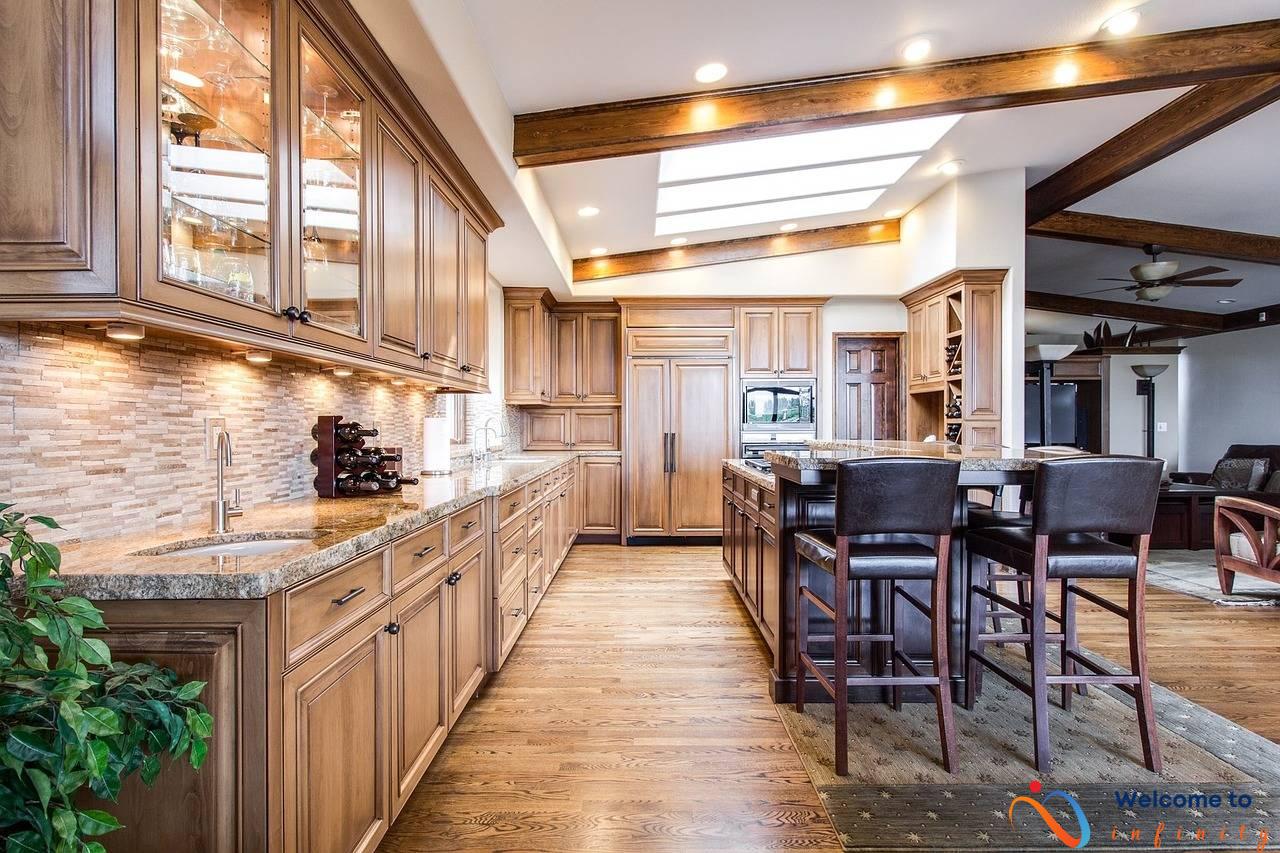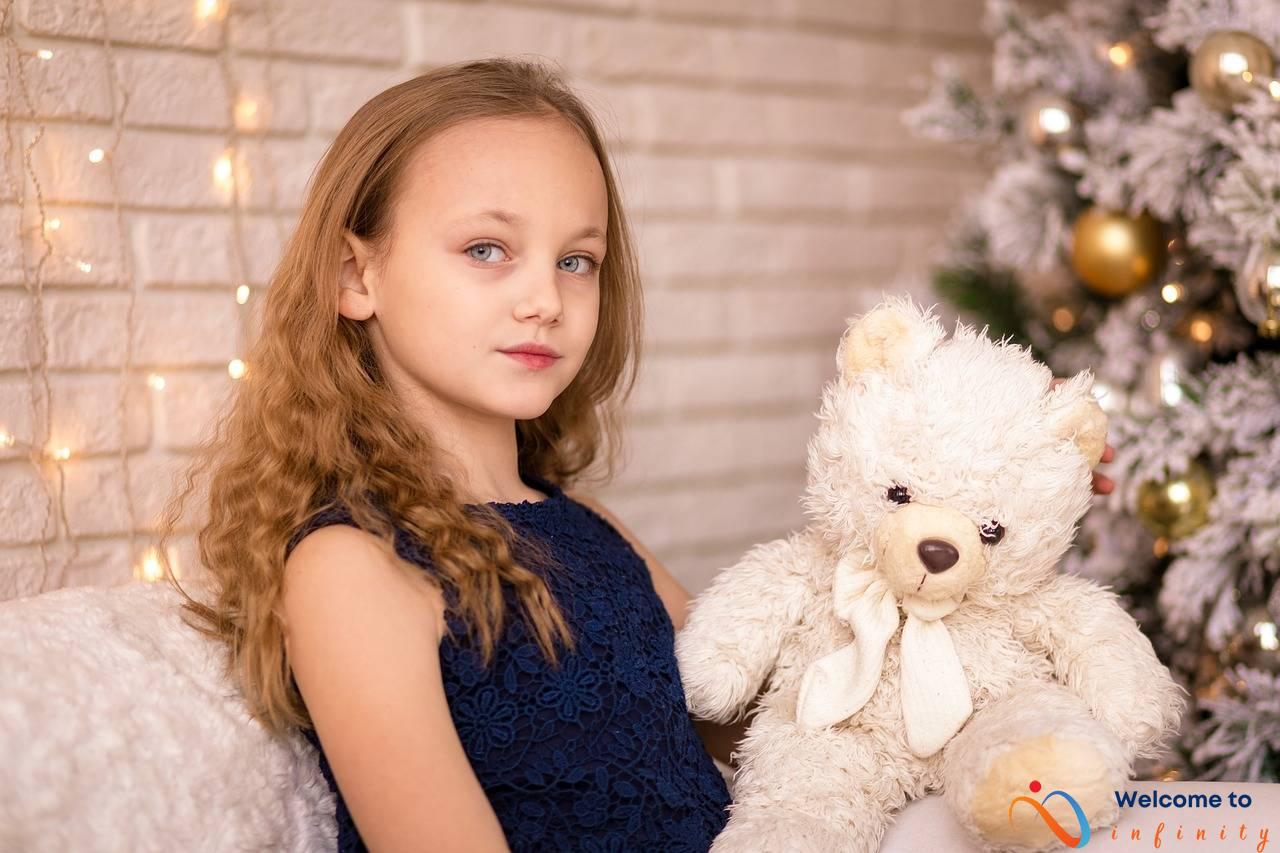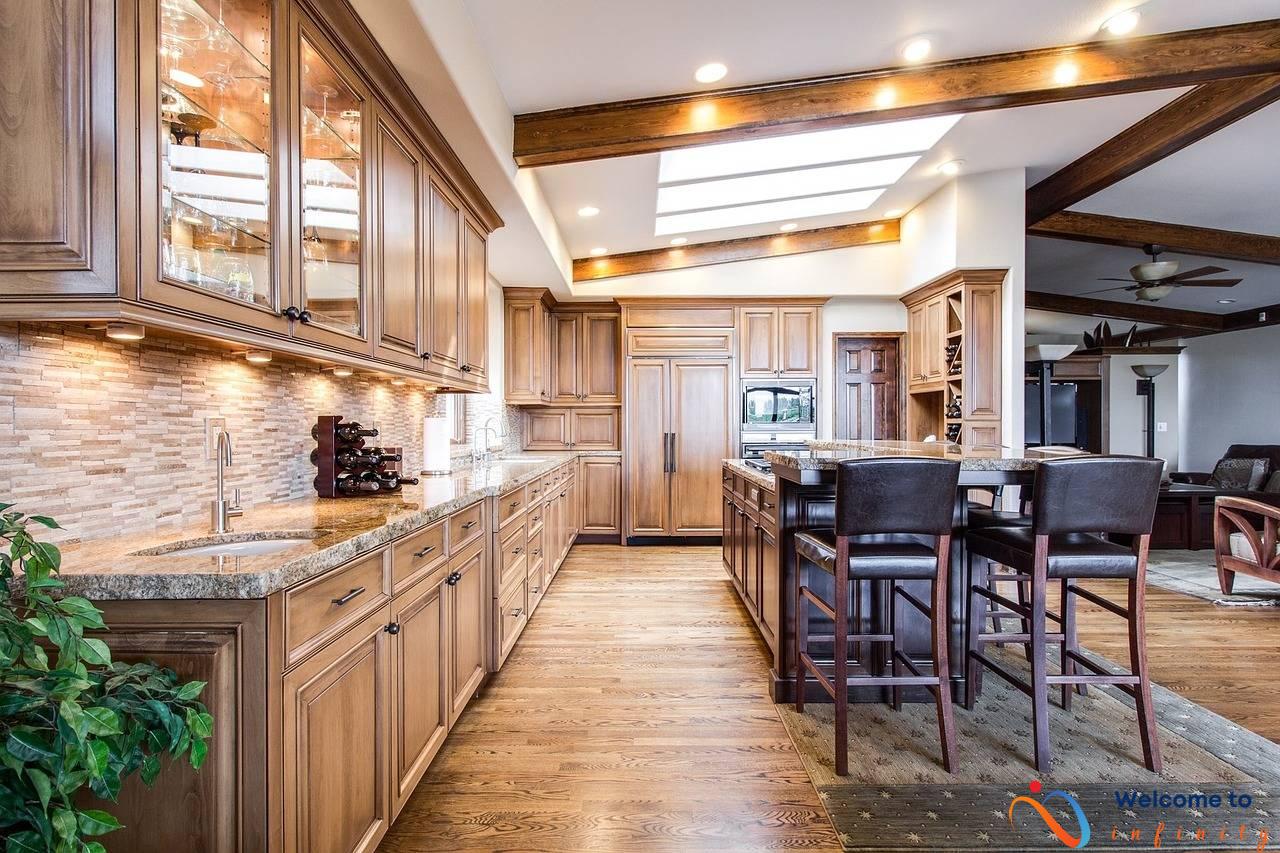Creating a beautiful and personalized interior design can be a daunting task, especially when you're torn between vintage and modern décor. However, by mixing and matching styles, you can create a unique space that showcases your personality and style. The art of combining old and new pieces is about striking the right balance, and with a little bit of creativity, it's easy to achieve a stylish and harmonious interior design.
The beauty of mixing vintage and modern pieces is that it allows you to add character to your space, without breaking the bank. While vintage pieces often come with a high price tag, they can be mixed with affordable modern pieces to create a cohesive and eclectic look. Incorporating vintage pieces also helps to create a warm and lived-in feel, while modern pieces offer a sleek and contemporary touch.
When it comes to mixing and matching, it's important to find a unifying factor that ties everything together. Whether it's a color, texture, or style, a unifying element can help to prevent your space from looking cluttered or chaotic. Playing with contrasting styles, like pairing a vintage sofa with modern accent chairs, can also create a dynamic and visually interesting interior design.
- Tip 1: Choose a neutral color palette that will complement both vintage and modern pieces.
- Tip 2: Look for vintage pieces that are in good condition and will last for years to come.
- Tip 3: Mix and match different textures, such as leather and velvet or metal and wood, to add depth and interest to your space.
| Vintage Pieces | Modern Pieces |
|---|---|
| Antique mirrors | Sleek metal accent tables |
| Handmade rugs | Clean-lined furniture |
| Vintage lighting fixtures | Abstract art prints |
If you're unsure how to start mixing and matching vintage and modern pieces, take inspiration from interiors that have successfully combined the two styles. The possibilities are endless, and you can easily create a space that showcases your personality and style. Whether you prefer a bohemian, mid-century modern, or contemporary elegance design approach, mixing vintage and modern pieces is the perfect way to add character and charm to your home.
Why Mix and Match?
If you are looking to add interest and personality to your living space while saving money, mixing vintage and modern pieces is the way to go. Incorporating different design styles in your home décor can add character, depth, and uniqueness to your living space. By combining vintage and modern elements, you can create a style that is unique to you while saving money on new furnishings.
One of the main benefits of mixing vintage and modern pieces is that it adds character to your home. By bringing in one-of-a-kind vintage pieces, you add a unique touch to your space that cannot be found anywhere else. Additionally, vintage pieces often have a story behind them, giving your space more depth and history. When mixed with modern items, the result is a balanced and interesting combination that has both character and sophistication.
Mixing vintage and modern pieces can also save you money. Vintage pieces can often be found for a fraction of the cost of new furnishings. By combining these vintage pieces with modern items, you can create an elegant yet affordable living space. Furthermore, you don't have to sacrifice quality when mixing vintage and modern pieces. Vintage pieces are often made from solid wood and high-quality materials, which can last for years. By adding these pieces to your space, you are adding a timeless and durable element to your home décor.
How to Mix and Match
One of the secrets to achieving a successful mix of vintage and modern furniture is to harmoniously blend the old and new pieces in your interior design. Here are some tips to help you create a cohesive and unique look:
- Play with contrasts: One way to make vintage and modern pieces work together is to emphasize their differences. For instance, you can pair a rustic farmhouse table with sleek modern chairs or soften the industrial feel of a modern sofa with vintage textiles like a crocheted blanket or handmade pillow.
- Find a unifying factor: While contrasts are important, it's also crucial to find a common thread that ties your pieces together. This could be a color scheme, a texture, a shape or even a theme. For example, you could create a coastal vibe by mixing a vintage anchor with modern seashell artwork or a mid-century credenza with a bold blue accent wall.
- Use a neutral color palette: If you're new to mixing and matching vintage and modern pieces, it's always safe to stick with a neutral color palette. Shades of white, beige, gray, or black provide a great backdrop for pieces of different eras and styles, allowing them to blend seamlessly. Plus, a neutral color scheme gives you the freedom to experiment with different textures and patterns without overwhelming your space.
Keep in mind that there's no one-size-fits-all approach to mixing and matching vintage and modern pieces, and it often takes a bit of trial and error to find the right combination for your space. But by following these tips and using your creativity, you can achieve a truly unique interior design that reflects your personality and style.
Choosing the Right Pieces
When it comes to mixing vintage and modern pieces in your interior design, choosing the right combination of furnishings is key to achieving a cohesive and stylish look. Here are some guidelines for selecting vintage and modern pieces that complement each other in terms of style, color, and texture:
- Consider your overall style: Before you start shopping for vintage and modern pieces, it's important to have a clear idea of your personal style and the overall look you want to achieve. Think about the colors, textures, and materials that appeal to you, and look for pieces that fit within that style.
- Find a unifying factor: Whether it's a particular color, pattern, or material, look for a common thread that can tie together your vintage and modern pieces. For example, you might choose a neutral color palette and then incorporate vintage and modern textures and materials in shades of cream, beige, and gray.
- Mix contrasts: To create visual interest and balance, mix contrasting styles and textures. For example, pair a sleek modern sofa with a vintage rug or incorporate bold, graphic patterns into a more traditional setting.
- Think about scale: When mixing vintage and modern pieces, it's important to consider the scale of each piece and how it fits into the overall space. Look for pieces that are complementary in size and shape, and use scale to create visual variety and balance.
Ultimately, the key to successfully mixing vintage and modern pieces is to be creative, experimental, and willing to take risks. With these guidelines in mind, you can create a unique and stylish interior that reflects your personal taste and style.
Identifying Vintage Pieces
Identifying vintage pieces is a crucial aspect of mixing and matching vintage and modern furnishing in your interior design. However, it can be quite challenging to determine if a piece is genuinely vintage or just a replica. To help you with this process, below are some tips on identifying vintage pieces.
Vintage styles and materials: Vintage pieces come in a variety of styles and materials that were popular during different periods. Some of the most common vintage styles include Victorian, Art Deco, and Mid-Century Modern. Similarly, vintage materials can also vary but often include wood, brass, and glass.
Evaluating quality and authenticity: One way to evaluate the quality of a vintage piece is to look for any signs of wear and tear, such as scratches, dents, or fading colors, which can give clues about the item's age. Additionally, vintage pieces often come with marks or labels indicating the manufacturer's name, style, and year of production. This information can help authenticate the piece and its origin.
research: Doing research beforehand can also help identify vintage pieces, as manufacturers often used unique designs and styles. Using the internet or consulting a vintage expert can help identify specific details about a piece. Lastly, antique markets and estate sales can be an excellent opportunity to see and evaluate vintage pieces in person.
In conclusion, identifying vintage pieces can be a daunting task, but with these tips in hand, it can be a fun and exciting experience. Combining vintage and modern pieces can create a unique and timeless interior design that reflects your personal style and preferences.
Identifying Modern Pieces
When it comes to identifying modern pieces for your interior design, it's important to stay up-to-date with current design trends. Some popular modern design styles include minimalist, industrial, and Scandinavian. One way to find modern pieces that fit your personal style and budget is by browsing online retailers and home décor websites, as they often have a wide selection of furniture and accessories.
When choosing modern pieces, it's important to consider the overall color scheme and aesthetic of your space. Neutral colors such as black, white, and gray are common in modern design, but adding a pop of color through accent pieces can also be effective.
Additionally, it's important to consider the quality and durability of modern pieces, especially if you plan on investing in high-end furniture. Look for materials such as hardwood, steel, and glass that are known for their durability and longevity. You can also research reviews and ratings of specific products to ensure their quality.
Lastly, budget considerations are important when selecting modern pieces for your interior design. Determine how much you are willing to spend on each piece and prioritize your purchases based on their importance to the overall design of your space.
Arranging Your Space
After acquiring the right vintage and modern pieces for your interior design, the arrangement of these items requires careful planning to achieve a cohesive look. Here are some practical tips for arranging vintage and modern elements:
- Layering: Create depth and interest by layering your pieces strategically. Start with the largest and most dominant piece, such as a vintage sofa or modern accent chair. Then add layers of smaller pieces, using contrasting colors, textures, and shapes. For example, you can place a vintage lamp and a stack of modern books next to the sofa to add visual interest.
- Focal Points: Decide on a focal point for your room and arrange your vintage and modern pieces around it. This can be a fireplace, artwork, or a window with a view. Place your most eye-catching items, such as an antique rug or a contemporary sculpture, near the focal point.
- Scale: Pay attention to the scale of your items when arranging them. You don't want a large vintage cabinet to overwhelm small modern accessories. Instead, use items of similar size and proportion to balance the room. For example, place a vintage coffee table in the center of a modern sectional sofa.
Additionally, don't be afraid to mix and match different styles and colors. The key is to find a unifying factor, such as a shared color or texture, to tie everything together. And don't forget to play around with different arrangements until you find the perfect balance for your space.
Examples of Successful Mixing and Matching
If you're looking for inspiration on how to blend vintage and modern pieces in your interior design, here are some examples of successful mixing and matching:
- The Classic Contemporary: This design approach uses modern furniture with clean, sleek lines and mix it with vintage pieces to add warmth and character. The use of a neutral color palette unifies the eclectic style while incorporating different fabric textures and finishes.
- The Industrial Chic: This style mixes vintage industrial design with modern minimalism. The use of raw materials, exposed brick walls, and metal accents gives the space an edgy and authentic vibe. Incorporating modern fixtures like lighting and shelving made from reclaimed wood softens the overall look of the space.
- The Glamorous Eclectic: This design approach combines vintage glamour with modern sophistication. By using vintage pieces like chandeliers, mirrored furniture, and bold prints alongside modern furniture pieces, the space creates a balance between old and new. The use of metallic accents adds glamour and elegance.
Other design approaches, such as Rustic Modern, Vintage Modern, and Mid-Century Modern, also incorporate the mixture of vintage and modern pieces in unique and creative ways. With a little imagination and a good eye for design, you can create a space that is both stylish and individual.
Bohemian Chic
If you're looking for a style that celebrates individuality, Bohemian Chic might be the perfect fit for you. This style is all about mixing and matching colorful, patterned, and textured pieces to create a relaxed, bohemian vibe. To incorporate vintage and modern elements in your Bohemian Chic space, start with a neutral base of walls, floors, and large furniture pieces.
Then, add pops of color and drama with vintage textiles such as kilim rugs, tapestries, and embroidered pillows. These pieces add depth and texture to your space while also showcasing your love of vintage finds.
To balance the vintage pieces, incorporate modern elements such as clean-lined furniture, contemporary art, and metallic accents. These touches add a fresh edge to your bohemian decor and bring out the beauty of your vintage textiles.
When arranging your Bohemian Chic space, embrace layering- this is at the heart of the style. Mix and match patterns, colors, and textures on your throw pillows, blankets, and rugs to create a cozy and welcoming atmosphere.
Another key element of this style is embracing the handmade and artisanal. Display vintage ceramics, handwoven baskets, and locally crafted artwork to bring personality and depth to your space. Finally, don't be afraid to incorporate luxurious elements such as velvet, fur, and gold accents to create a sense of bohemian elegance in your home.
Key Elements of Bohemian Chic:
- Neutral base
- Vintage textiles
- Modern accents
- Layering
- Handmade and artisanal pieces
- Touches of luxury
Mid-Century Modern
Mid-Century Modern is a design style that emerged in the mid-20th century, roughly from the 1940s to the mid-1960s. It is known for its clean lines, organic shapes, and use of materials such as molded plastic, plywood, and metal. Mid-Century Modern furniture is highly sought after by collectors and designers alike, and can add a touch of retro sophistication to any interior.
To incorporate Mid-Century Modern pieces into your home, start with furniture. Look for pieces with iconic designs, such as the Eames Lounge Chair, the Noguchi Coffee Table, or the Saarinen Tulip Table. You can often find vintage versions of these pieces at antique stores or online, but they can be quite pricey. Alternatively, many furniture companies offer modern reproductions that capture the essence of Mid-Century Modern design at more affordable prices.
When it comes to color, Mid-Century Modern is all about bold hues. Think mustard yellow, avocado green, and tangerine orange. These colors can be incorporated in larger pieces of furniture, such as a sofa or accent chair, or in smaller accessories, such as pillows or rugs. To balance out the boldness, stick to a neutral color palette for walls and other furnishings.
To complete the Mid-Century Modern look, add in some vintage accessories. An atomic-inspired clock, a starburst mirror, or a ceramic vase can all add to the retro vibe. Just be careful not to overdo it, as too many vintage elements can make the space feel cluttered and outdated.
Contemporary Elegance
Contemporary interior design emphasizes sleek lines, minimalism, and a neutral color palette. However, it can sometimes feel cold and empty without any personal touches. This is where vintage pieces come in, adding warmth and character to a contemporary space.
When selecting vintage items to incorporate into a contemporary design, it's important to choose pieces that complement the overall aesthetic. For example, a mid-century modern chair with clean lines and a simple color palette will fit in seamlessly with a contemporary living room. Alternatively, a vintage Persian rug with bold colors and intricate patterns can add texture and visual interest to an otherwise minimalist space.
It's also important to consider the scale of vintage pieces when incorporating them into a contemporary design. Large, statement pieces such as a vintage leather sofa or a retro coffee table can become the focal point of a room, while smaller items like a vintage vase or a retro lamp can add a touch of personality to a side table or bookshelf.
To achieve a harmonious blend of vintage and modern, it's recommended to stick to a neutral color palette. This will allow the vintage pieces to shine without competing with the modern elements. Additionally, layering different textures and fabrics can add depth and dimension to a space, creating a cozy and inviting atmosphere.
Incorporating vintage pieces into your contemporary home is a great way to inject personality and uniqueness into your design. With a thoughtful approach, vintage items can add warmth and character to an otherwise sterile space.

